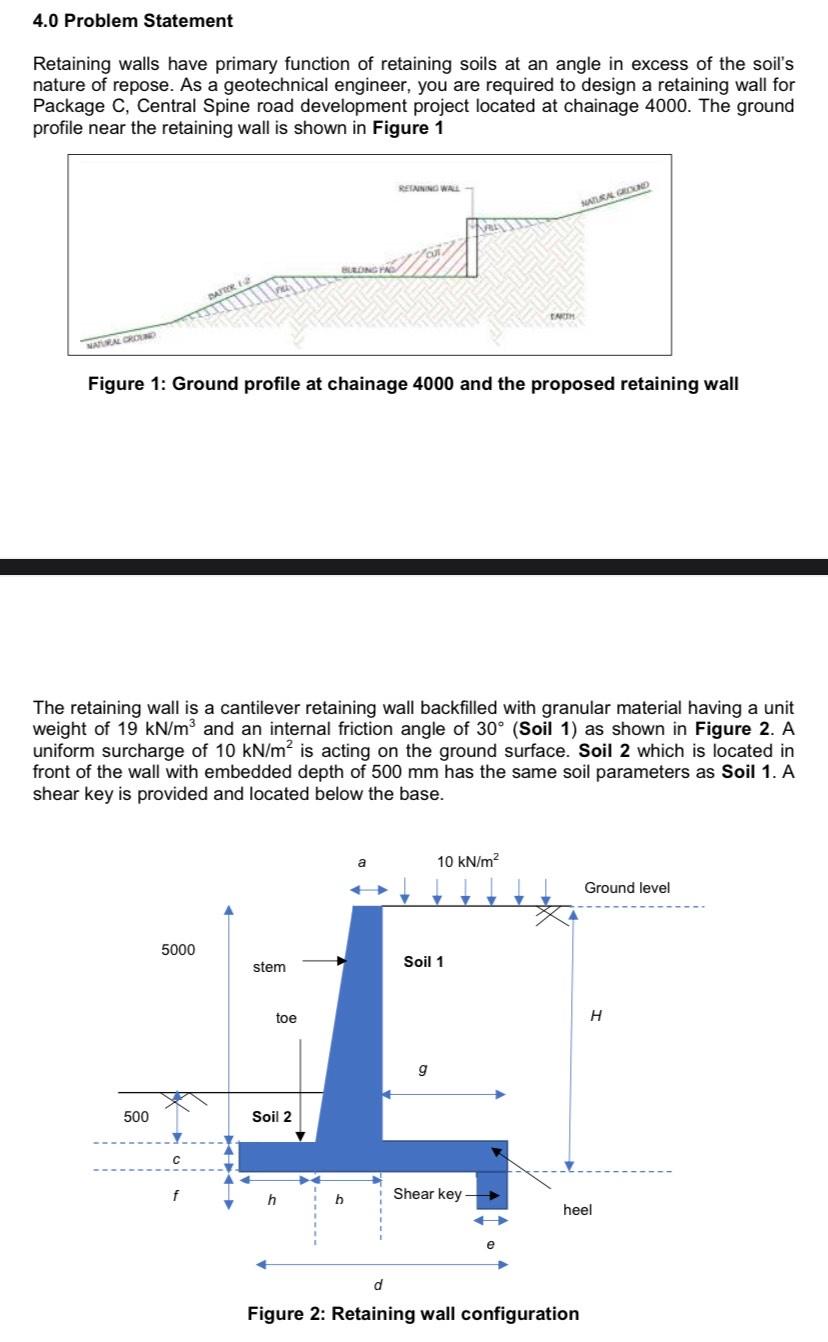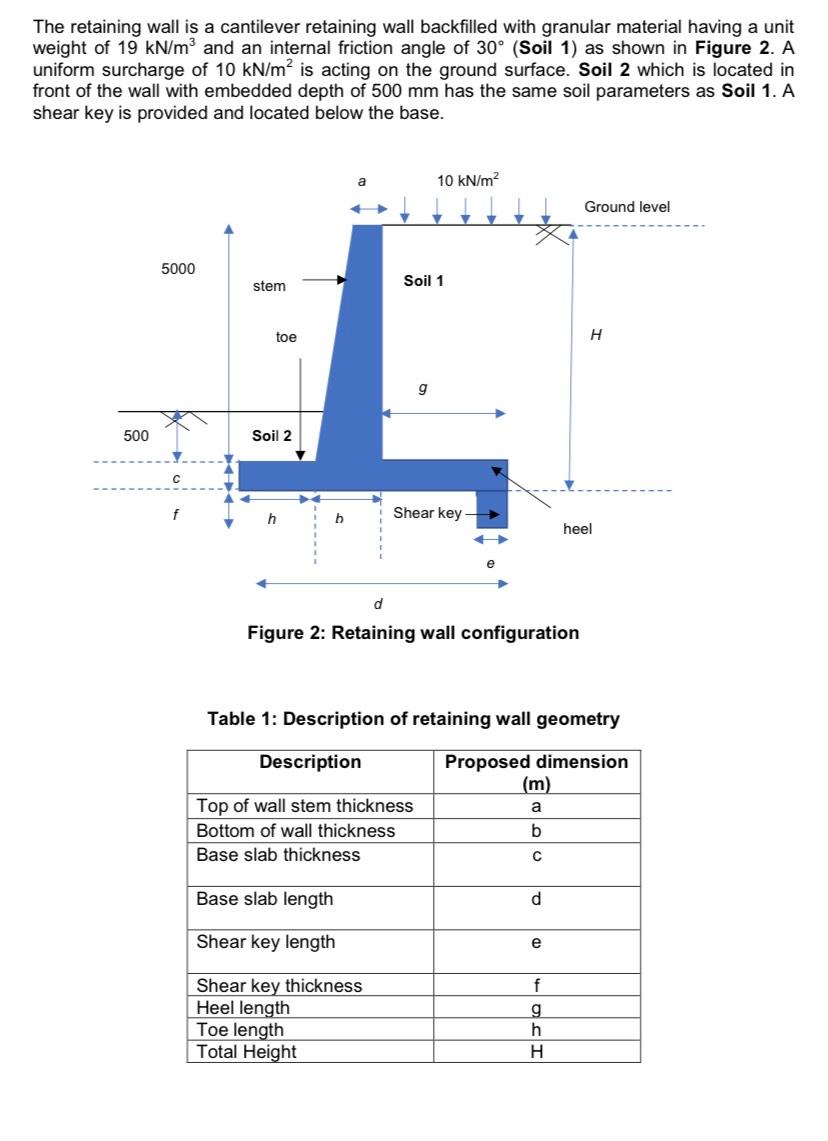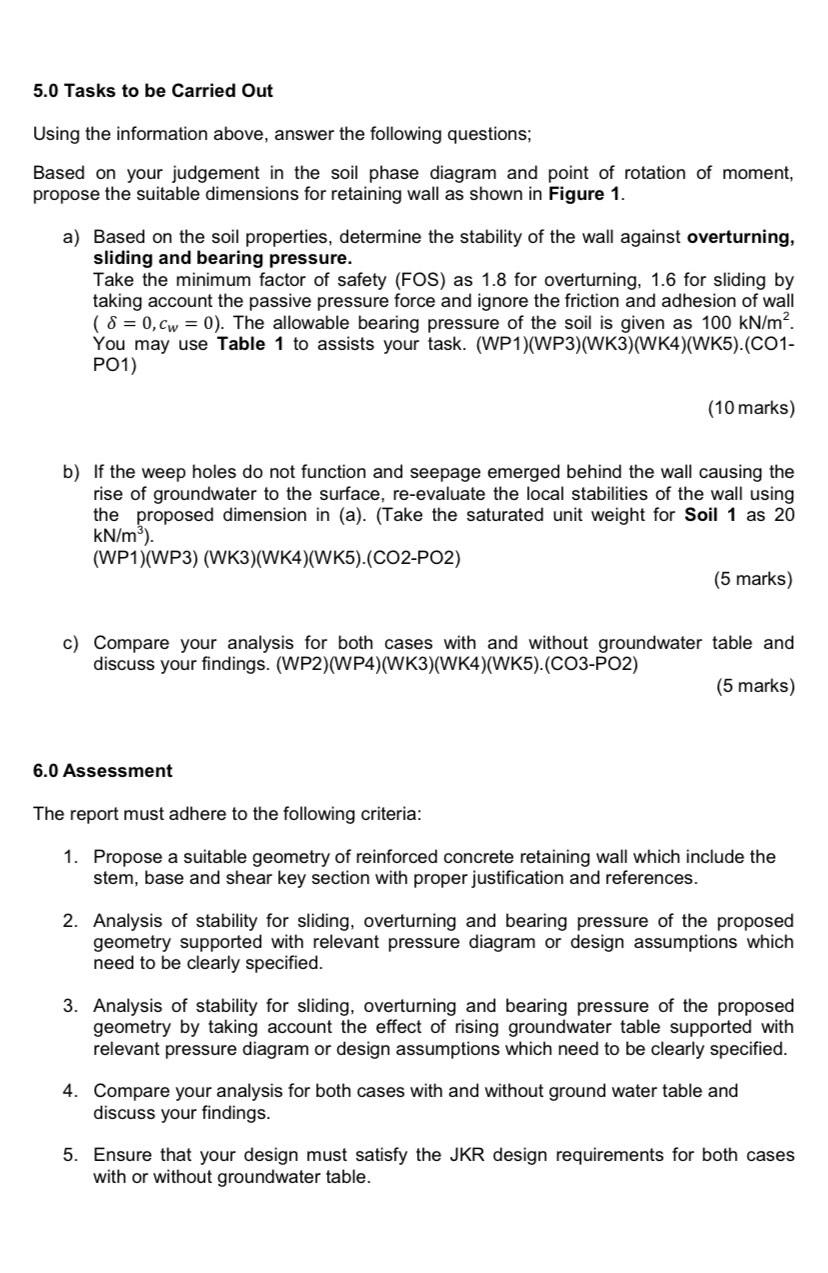Home /
Expert Answers /
Civil Engineering /
4-0-problem-statement-retaining-walls-have-primary-function-of-retaining-soils-at-an-angle-in-pa868
(Solved): 4.0 Problem Statement Retaining walls have primary function of retaining soils at an angle in ...
4.0 Problem Statement Retaining walls have primary function of retaining soils at an angle in excess of the soil's nature of repose. As a geotechnical engineer, you are required to design a retaining wall for Package C, Central Spine road development project located at chainage 4000 . The ground profile near the retaining wall is shown in Figure 1 Figure 1: Ground profile at chainage 4000 and the proposed retaining wall The retaining wall is a cantilever retaining wall backfilled with granular material having a unit weight of \( 19 \mathrm{kN} / \mathrm{m}^{3} \) and an internal friction angle of \( 30^{\circ} \) (Soil 1) as shown in Figure 2. A uniform surcharge of \( 10 \mathrm{kN} / \mathrm{m}^{2} \) is acting on the ground surface. Soil 2 which is located in front of the wall with embedded depth of \( 500 \mathrm{~mm} \) has the same soil parameters as Soil 1. A shear key is provided and located below the base. Figure 2: Retaining wall configuration
The retaining wall is a cantilever retaining wall backfilled with granular material having a unit weight of \( 19 \mathrm{kN} / \mathrm{m}^{3} \) and an internal friction angle of \( 30^{\circ} \) (Soil 1) as shown in Figure 2. A uniform surcharge of \( 10 \mathrm{kN} / \mathrm{m}^{2} \) is acting on the ground surface. Soil 2 which is located in front of the wall with embedded depth of \( 500 \mathrm{~mm} \) has the same soil parameters as Soil 1. A shear key is provided and located below the base. Table 1: Description of retaining wall geometry
5.0 Tasks to be Carried Out Using the information above, answer the following questions; Based on your judgement in the soil phase diagram and point of rotation of moment, propose the suitable dimensions for retaining wall as shown in Figure 1. a) Based on the soil properties, determine the stability of the wall against overturning, sliding and bearing pressure. Take the minimum factor of safety (FOS) as \( 1.8 \) for overturning, \( 1.6 \) for sliding by taking account the passive pressure force and ignore the friction and adhesion of wall \( \left(\delta=0, c_{w}=0\right) \). The allowable bearing pressure of the soil is given as \( 100 \mathrm{kN} / \mathrm{m}^{2} \). You may use Table 1 to assists your task. (WP1)(WP3)(WK3)(WK4)(WK5).(CO1PO1) b) If the weep holes do not function and seepage emerged behind the wall causing the rise of groundwater to the surface, re-evaluate the local stabilities of the wall using the proposed dimension in (a). (Take the saturated unit weight for Soil 1 as 20 \( \left.\mathrm{kN} / \mathrm{m}^{3}\right) \). (WP1)(WP3) (WK3)(WK4)(WK5).(CO2-PO2) (5 marks) c) Compare your analysis for both cases with and without groundwater table and discuss your findings. (WP2)(WP4)(WK3)(WK4)(WK5).(CO3-PO2) (5 marks) 6.0 Assessment The report must adhere to the following criteria: 1. Propose a suitable geometry of reinforced concrete retaining wall which include the stem, base and shear key section with proper justification and references. 2. Analysis of stability for sliding, overturning and bearing pressure of the proposed geometry supported with relevant pressure diagram or design assumptions which need to be clearly specified. 3. Analysis of stability for sliding, overturning and bearing pressure of the proposed geometry by taking account the effect of rising groundwater table supported with relevant pressure diagram or design assumptions which need to be clearly specified. 4. Compare your analysis for both cases with and without ground water table and discuss your findings. 5. Ensure that your design must satisfy the JKR design requirements for both cases with or without groundwater table.


